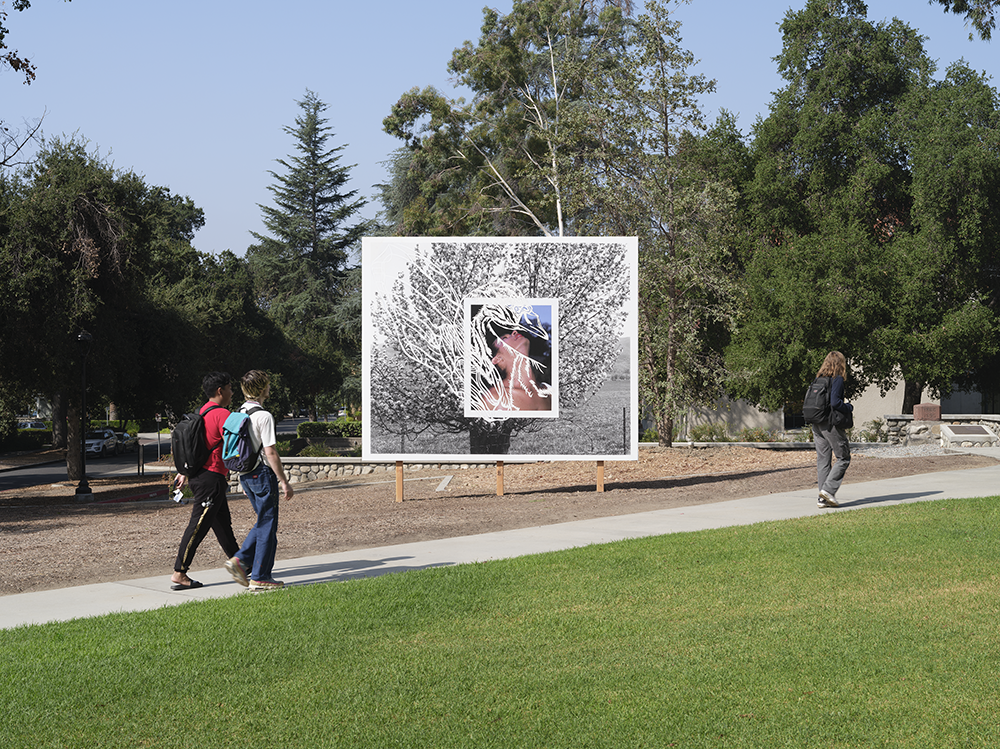A meandering sun-bleached trek forms the exterior presence of Wardell Milan’s exhibition adjacent to the recently completed art museum at the oldest of the seven Claremont Colleges—an academic plantation that sprawls over 500 acres and eagerly sends clever children abroad, hoping that they should one day become captains of industry and richly reward their alma mater. Scattered across campus this collection of pictorial billboards—drawn, collaged and photographed imagery of figures in hiding, torment, labor or desire—demonstrate an intentional contrast to their location; the meticulously manicured lawns and well-kept streets of the pristine village bear the names of posh and aspirational institutions of higher learning: Cambridge, Princeton, Harvard. One is directed through the campus by map or compass toward Milan’s large billboard imagery. However, Milan’s work is anything but posh.
The Migrant Body (all works 2022) illustrates fieldworkers toiling among the rows of produce that will soon garnish our tables, The Trans Body is a human/bird transformation that suggests escape and rebirth as a swan, and The Female Body is a pile of indeterminate refuse beside a transformed split-gender figure cradling an incipient child that may defy conventional description. The Quarantine Body has the haunting gaze and the bodily contortions of a Francis Bacon bathhouse vision so disconcerting that a peeping tom would turn away. The last and by far the best of the billboard series—The Black Male Body—is fragmented and suggestive of a figure already transitioned as constellation and waterway, figure and ground, past and present; a transformation wishfully reminiscent of Juliet: “and, when he shall die, Take him and cut him out in little stars, And he will make the face of heaven so fine, That all the will be in love with night, And pay no worship to the garish sun.” This work is much more inviting, far less direct than the previous images and allows the viewer to immerse themselves in the possibility of magic and transformation, no matter how far-fetched, in such wonderment.

Wardell Milan, The Trans Body, from the series “5 Indices on a Tortured Body,” 2022. Fund for Art in Public Places. Photo: Fredrik Nilsen. Courtesy of the Benton Museum of Art at Pomona College.
Inside the new museum is an equally new artwork that has a lengthy title but a succinct message—My knees getting weak, and my anger might explode, but if God got us then we gonna be alright (2021). The message is old and unforgettable while being simultaneously brand new, speaking another language that is equally understandable and tragically memorable. The figures here constitute a mortal pile suggestive at first of the horror and desperation in Delacroix’s Raft of the Medusa, but more readily and evocatively reveals itself as a recognizably 20th-century horror. It draws to mind a writhing cone of naked humans, old and young, mouths screaming wildly and flesh scrumming hopelessly, climbing upon one another toward an empty, frightening, breathless salvation in a death chamber.


